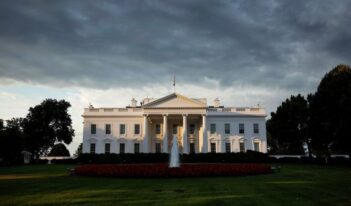
The economic principles underlying cost-benefit analysis exclude future impacts.
On January 27, President Joe Biden signed an executive memorandum on “restoring trust in government through scientific integrity and evidence-based policymaking.” The memo included an easy-to-miss provision about incorporating behavioral science insights into regulatory policy. This provision could play an important role in the Biden Administration’s regulatory program, so it is worth investigating further.
The typical economic rationale for government regulation of the economy is market failure. Underlying the market failure concept is the idea that, because of certain frictions known as transaction costs, mutually beneficial exchanges that would make society better off—gains from trade—fail to take place.
These transaction costs are present in situations involving externalities, asymmetric information, monopoly power, and the provision of public goods. In these situations, neoclassical economic theory holds that government intervention can potentially be a corrective force to improve people’s welfare.
Some government agencies and academics, however, have begun justifying policy interventions based on “behavioral market failures.” These failures extend the “neoclassical market failures” mentioned above to include instances of suboptimal decision-making by the public. Behavioral market failures occur because of various cognitive biases we have as individuals—which create mental transaction costs, if you will, that result in poor decisions that reduce our own welfare.
Many of the biases identified by behavioral economists, who study the intersection of economics and psychology, relate to situations involving tradeoffs that occur over time. The idea is that our own decisions can be problematic if they involve up-front costs that may deter us now, but produce streams of benefits in the future (or vice versa—produce benefits upfront and costs later). Not surprisingly, these issues are often associated with self-indulgent behavior or self-control problems.
Ironically, textbook presentations of market failure theory suffer from their own form of present bias. Economists tend to explain market failures in a static context without considering the effects of time. One way they do this is by failing to distinguish social benefits and costs that are consumed from those effects that are invested and grow in value with time.
Even with a problem such as global warming—known to have long-run intergenerational consequences—standard economic analysis tends to evaluate only how negative externalities stemming from climate change impact the present generation’s well-being.
To correct market failures, it can be worthwhile to override people’s choices. This is not to say that consumers are better off by having had their choices overridden, something behavioral economists often assert. Rather, all regulations override choice to some extent and thus impose costs. That alone is not a sufficient reason to preclude regulation. The key, however, is to account for all the impacts, not just those that occur in the present.
Consider the hypothetical example of a regulation for an appliance that would save $1 million by reducing energy use. Faced with a requirement that their appliances conserve energy, manufacturers might remove a feature for which current consumers would have collectively been willing to pay $2 million because the appliance is more user-friendly with the feature. From the standpoint of the appliance’s purchasers, this is a bad deal. If there are no other benefits, they value the lost product quality more than the financial savings from lower utility bills. They would be made worse off by this regulation.
But consider the same regulation from the standpoint of future consumers. If even a small fraction of the million dollars in financial savings was invested and reinvested continually, it would grow into far more than $1 million or even $2 million in the future, owing to compounding. The short-run reduction in consumer well-being as a result of lower-functioning appliances seems trivial from this long-run perspective because it is a fleeting loss. Meanwhile, the compounding gains of capital accumulation have much further-reaching consequences.
If future consumers could participate in present-day markets, they might be willing to compensate current consumers to accept the lower-functioning appliance. In our example, they might be willing to pay consumers $2.1 million to accept some functionality impairment in their appliances.
If such compensation took place, everyone would be made better off by the regulation without making anyone else worse off, a situation known as a Pareto improvement. Consumers today would have a worse device but would also have extra money that more than compensates them for the lower-functioning device. Furthermore, consumers in the future would benefit from increased investment that boosted economic growth and raised their incomes.
Even without compensation, the winners in the future gain more than the losers in the present lose, a situation known as a Kaldor-Hicks improvement—or a potential Pareto improvement—a principle which underlies cost-benefit analysis.
In this example, time creates transaction costs. Similar to how externalities, asymmetric information, and even poor decision-making result from physical or mental transaction costs, time creates a market failure by preventing mutually beneficial exchanges from occurring. The difference is that unlike with traditional market failures, harmed third parties are not yet alive or old enough to lobby on behalf of their own interests.
These intertemporal market corrections have an interesting characteristic: They can reverse the policy implications of the static market failures described in economics textbooks.
Say that a polluting power plant reduces air quality in a city. Residents, if they could organize, might be willing to pay the plant to reduce its emissions. But organizing involves incurring high transaction costs, so the exchange likely will not take place. This situation seems like a case for government regulation.
Usually, the economic analysis stops there. But there is still the future to consider.
If the pollution in our example only reduces short-term consumer well-being, for example because it only has nonmarket impacts with returns that cannot be reinvested, but regulation comes at the expense of capital accumulation and future economic growth, then people in the future might be willing to compensate present citizens to accept current levels of pollution. Well-being cannot be invested like money, so future social welfare is unlikely to be improved by regulating the power plant in this case—unless the pollution also lowers productivity and market production, causing society to forgo compounding returns to capital.
It may well be that, in this case, the efficient outcome is for the power plant to produce more energy—not less—and by extension, to increase present pollution somewhat. One could also envision a different situation where future citizens pay to prevent catastrophic outcomes or pollution that causes long-term harm to the economy.
The point is that standard cost-benefit analysis fails to recognize these future improvements or reductions in allocative efficiency, as it focuses exclusively on static outcomes in the present, not dynamic ones across time. The task for economists, then, is to think about policy impacts in a dynamic way.
President Biden’s recent memo on scientific integrity foreshadows increased use of behavioral science to justify regulations. The irony, though, is that the same regulators and academics who presume to be able to correct the irrational decisions of others suffer from their own form of present bias, at least when it comes to cost-benefit analysis and the market failure theory that supports it. This irony prompts an obvious question: Who is it that is irrational? Is it consumers—or is it economists?




